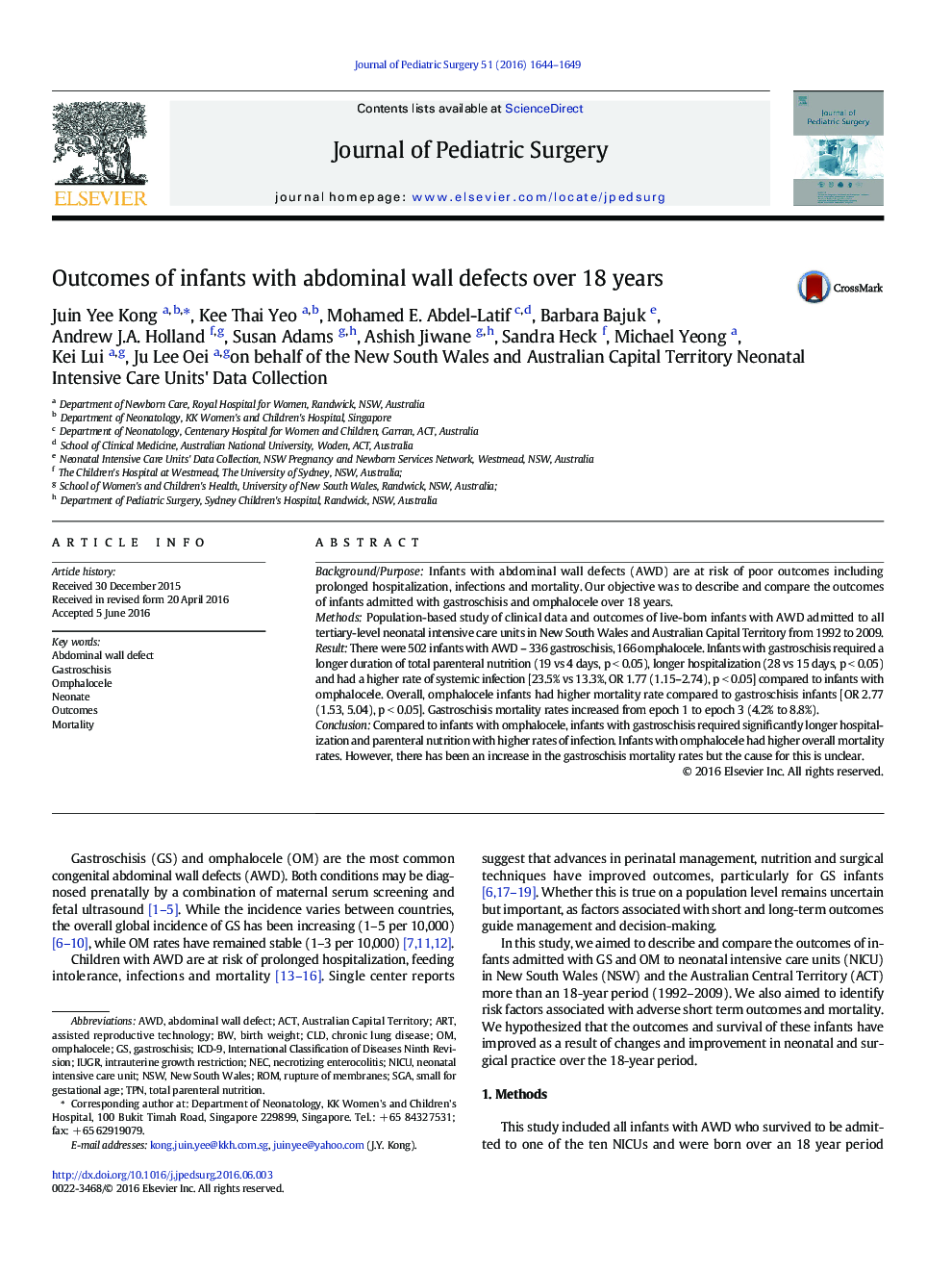| Article ID | Journal | Published Year | Pages | File Type |
|---|---|---|---|---|
| 4154673 | Journal of Pediatric Surgery | 2016 | 6 Pages |
Background/PurposeInfants with abdominal wall defects (AWD) are at risk of poor outcomes including prolonged hospitalization, infections and mortality. Our objective was to describe and compare the outcomes of infants admitted with gastroschisis and omphalocele over 18 years.MethodsPopulation-based study of clinical data and outcomes of live-born infants with AWD admitted to all tertiary-level neonatal intensive care units in New South Wales and Australian Capital Territory from 1992 to 2009.ResultThere were 502 infants with AWD – 336 gastroschisis, 166 omphalocele. Infants with gastroschisis required a longer duration of total parenteral nutrition (19 vs 4 days, p < 0.05), longer hospitalization (28 vs 15 days, p < 0.05) and had a higher rate of systemic infection [23.5% vs 13.3%, OR 1.77 (1.15–2.74), p < 0.05] compared to infants with omphalocele. Overall, omphalocele infants had higher mortality rate compared to gastroschisis infants [OR 2.77 (1.53, 5.04), p < 0.05]. Gastroschisis mortality rates increased from epoch 1 to epoch 3 (4.2% to 8.8%).ConclusionCompared to infants with omphalocele, infants with gastroschisis required significantly longer hospitalization and parenteral nutrition with higher rates of infection. Infants with omphalocele had higher overall mortality rates. However, there has been an increase in the gastroschisis mortality rates but the cause for this is unclear.
